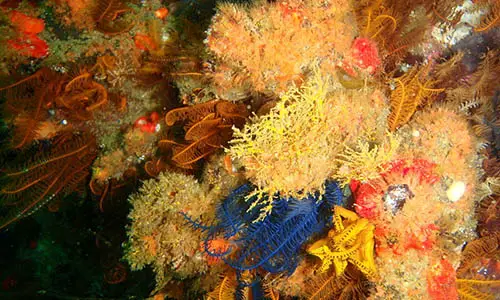1. Animals that can survive without backbones.
- Unlike humans, invertebrates can live quite long without bones; and they account for about 90% of animal species.
- Bones are supposed to be located inside the body; but for most invertebrates, their bones are located outside (called an exoskeleton). An example is crabs.
2.Invertebrates have about 30 major groups of animals.
- The major groups of invertebrates are subdivided in subgroups. That is how large the invertebrate animal kingdom is.
- Invertebrates are six-legged, like insects. There are about one million species of insects in the major subgroups of invertebrates.
- There are over 200,000 species of invertebrates in Australia.
3. Some of the invertebrates have a very long lifespan, which can reach up to 100 years.
- Examples are mollusks, one of the largest groups of invertebrate species.
- Despite being in the ocean their entire lifetime and exposed to different types of viruses, they tend to live longer.
4. Invertebrates are naturally fascinating.
- Like butterflies, dragonflies, and grasshoppers, they all come in a wonderfully colorful appearance that makes them very attractive to children. They can be easily introduced at school for their scientific study, which children can observe very closely.
- They are seen anywhere, and you can encounter them in your day-to-day living.
- Most of them are tiny and microscopic. You actually have about a million invertebrates around you right at this moment.
5. They have specific environmental and biological needs.
- A kind of animal that cannot be kept as a pet.
- They need their natural environment for them to live and grow.
- Like human beings, they cannot be taken away from their natural habitat.
6. They have a very important function to maintain the equilibrium of the ecosystem.
- Invertebrates play an important role in the vegetation process.
- Most foods intended for human consumption come from plants or fruit-bearing trees.
- Plants cannot produce a quality product with a dry and non-nutritious soil.
- The earthworm, an example of an invertebrate, greatly affects the properties of soil and vegetation as a whole.
- They create channels for water and air movement, providing a natural filter for air and water pollutants.
7. Some invertebrates are a potential great source for antiviral drugs and medicines, which makes them a great contributor for medical advancement.
- They are widely used for various scientific studies and research.
- Mollusks, a type of invertebrates that mostly thrive on marine habitats (also in fresh waters), have an immunity that is highly effective in protecting themselves from any viruses, including human pathogens.
- Study shows that the mollusk, having the extreme capacity for adaptation, suggests a potential source of antiviral compound for future drug breakthroughs.
8. Invertebrates are an essential part of a crime scene.
- In forensic entomology, the study of insects is becoming an adjunct means in forensic investigation.
- From the early stages, attracted by a decomposing corpse, insects lay eggs on it. Entomologists will then meticulously study the insect population and the developing larval stages in the body.
- They are widely used in determining the postmortem index of a decomposing body in certain crime scenes.
9. They are a great source of products widely used for commercial industry.
- From the life cycle of the silkworm (an invertebrate), there comes the production of a cocoon (the larva).
- Silk is a natural fiber woven into textiles that comes from the cultivation of a cocoon.
10. They have a very powerful senses.
- They are particularly sensitive to environmental changes.
- Their instincts are to find another habitat for their survival needs.











Leave a Reply